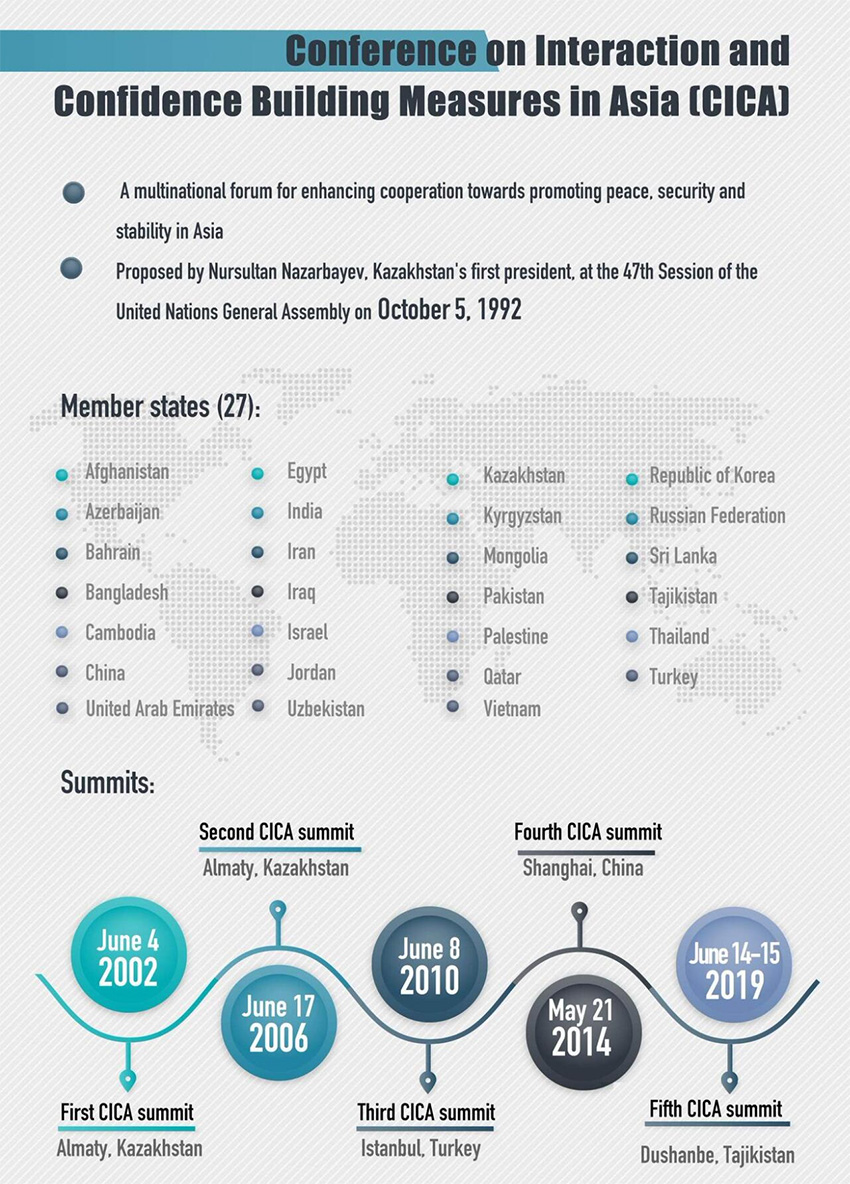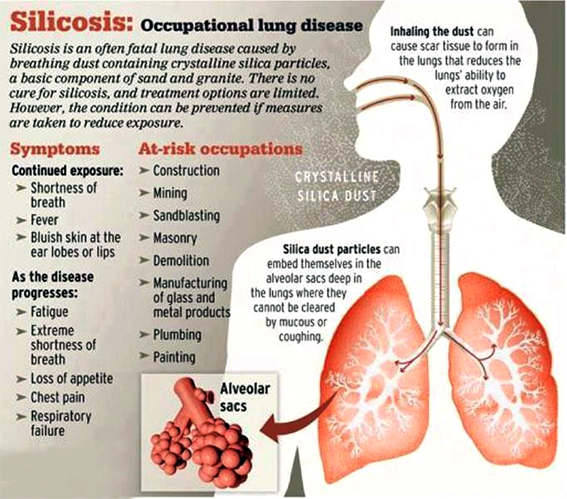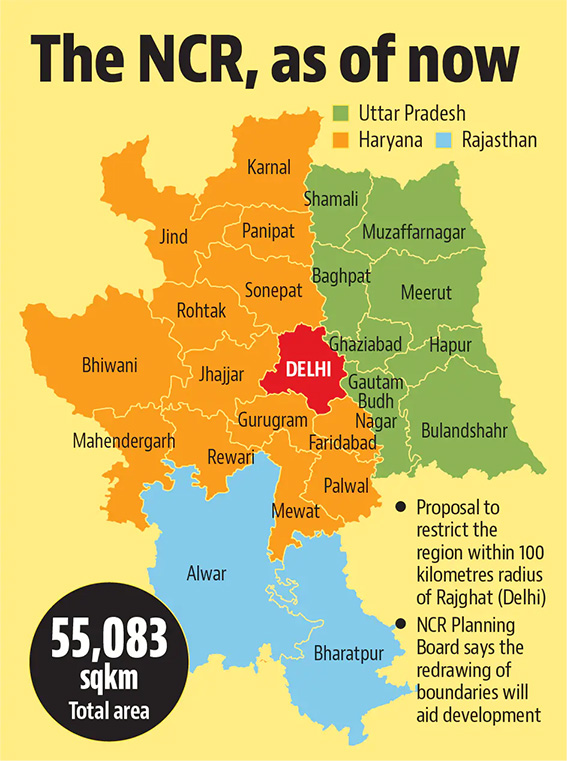Indian Economy
PM Gati Shakti Scheme
Why in News
Recently, the government of India has launched the ambitious Gati Shakti scheme or National Master Plan for multi-modal connectivity plan, with the aim of coordinated planning and execution of infrastructure projects to bring down logistics costs.
Key Points
- About the Scheme
- Aim: To ensure integrated planning and implementation of infrastructure projects in the next four years, with focus on expediting works on the ground, saving costs and creating jobs.
- The Gati Shakti scheme will subsume the Rs 110 lakh crore National Infrastructure Pipeline that was launched in 2019.
- Besides cutting logistics costs, the scheme is also aimed at increasing cargo handling capacity and reducing the turnaround time at ports to boost trade.
- It also aims to have 11 industrial corridors and two new defence corridors - one in Tamil Nadu and other in Uttar Pradesh. Extending 4G connectivity to all villages is another aim. Adding 17,000 kms to the gas pipeline network is being planned.
- It will help in fulfilling the ambitious targets set by the government for 2024-25, including expanding the length of the national highway network to 2 lakh kms, creation of more than 200 new airports, heliports and water aerodromes.
- Integrated Approach: It intends to bring together 16 infrastructure related Ministries.
- This will help in removing long-standing issues such as disjointed planning, lack of standardisation, problems with clearances, and timely creation and utilisation of infrastructure capacities.
- Gati Shakti Digital Platform: It involves the creation of a common umbrella platform through which infrastructure projects can be planned and implemented in an efficacious manner by way of coordination between various ministries/departments on a real-time basis.
- Expected Outcomes
- The scheme will help mapping the existing and proposed connectivity projects.
- Also, there will be immense clarity on how different regions and industrial hubs in the country are linked, particularly for last mile connectivity.
- A holistic and integrated transport connectivity strategy will greatly support Make in India and integrate different modes of transport.
- It will help India become the business capital of the world.
- Aim: To ensure integrated planning and implementation of infrastructure projects in the next four years, with focus on expediting works on the ground, saving costs and creating jobs.
- Need for Integrated Infrastructure Development:
- There exists a wide gap between macro planning and micro implementation due to the lack of coordination and advanced information sharing as departments think and work in silos.
- According to a study, the logistical cost in India is about 13% of GDP, which is higher than developed countries.
- Due to this high logistical cost, the competitiveness of India’s exports is greatly reduced.
- It is globally accepted that the creation of quality infrastructure for Sustainable Development is a proven way, which gives rise to many economic activities and creates employment on a large scale.
- The scheme is in synergy with the National Monetisation Pipeline (NMP).
- The NMP has been announced to provide a clear framework for monetisation and give potential investors a ready list of assets to generate investment interest.
- Associated Concerns
- Low Credit Off-take: Although the government had taken up ‘strong’ banking sector reforms and the Insolvency and Bankruptcy Code had yielded about Rs. 2.4 lakh crore of recoveries on bad loans, there are concerns about declining credit offtake trends.
- Banks give credit off-takes to help businesses acquire financing for future projects through the promise of future income and proof of an existing market.
- Lack of Demand: In the post-Covid-19 scenario,there is a lack of private demand and investment demand.
- Structural Problems: Due to land acquisition delays and litigation issues, the rate of implementation of projects is very slow on global standards.
- Getting approvals is very difficult in terms of land access, environmental clearances; also impending litigation in court delays the infrastructure projects.
- Low Credit Off-take: Although the government had taken up ‘strong’ banking sector reforms and the Insolvency and Bankruptcy Code had yielded about Rs. 2.4 lakh crore of recoveries on bad loans, there are concerns about declining credit offtake trends.
Way Forward
- PM Gati Shakti is a step in the right direction. However, it needs to address structural and macroeconomic stability concerns, emanating from high public expenditure.
- Thus, it is imperative that this initiative is underpinned by a stable and predictable regulatory and institutional framework.
Biodiversity & Environment
Kunming Declaration on Biodiversity
Why in News
Recently, the Kunming Declaration was adopted by over 100 countries at the ongoing 15th Conference of the Parties to the United Nations Convention on Biological Diversity in china.
- The adoption of the declaration will create momentum for a new global biodiversity pact.
- In a previous agreement, Strategic Plan for Biodiversity 2011-2020, signed in Aichi, Japan, in 2010, governments agreed on 20 targets to try to slow biodiversity loss and protect habitats by 2020.
Key Points
- About
- It calls for urgent and integrated action to reflect biodiversity considerations in all sectors of the global economy but crucial issues - like funding conservation in poorer countries and committing to biodiversity-friendly supply chains have been left to discuss later.
- It is not a binding international agreement.
- It calls upon the parties to mainstream biodiversity protection in decision-making and recognise the importance of conservation in protecting human health.
- The theme of the declaration is Ecological Civilization: Building a Shared Future for All Life on Earth.
- By adopting this, the nations have committed themselves to support the development, adoption and implementation of an effective post-2020 implementation plan, a capacity building action plan for the Cartagena Protocol on biosafety.
- The Protocol seeks to protect biological diversity from the potential risks posed by living modified organisms resulting from modern biotechnology.
- As per the declaration the signatory nations will ensure that the post-pandemic recovery policies, programmes and plans contribute to the conservation and sustainable use of biodiversity, promoting sustainable and inclusive development.
- It calls for urgent and integrated action to reflect biodiversity considerations in all sectors of the global economy but crucial issues - like funding conservation in poorer countries and committing to biodiversity-friendly supply chains have been left to discuss later.
- 30 by 30 Target
- The declaration made a reference to the '30 by 30' target which is a key proposal being debated at the COP15, that would afford 30% of the Earth’s land and oceans protected status by 2030.
- Apart from this, the goal to halve the use of chemicals in agriculture and stop creating plastic waste is also being debated.
- The declaration made a reference to the '30 by 30' target which is a key proposal being debated at the COP15, that would afford 30% of the Earth’s land and oceans protected status by 2030.
- Kunming Biodiversity Fund
- China has also pledged to inject USD 233 million into a new fund to protect biodiversity in developing countries. The fund is being referred to by China as Kunming Biodiversity Fund.
- It is the right step in this direction. However, some countries have reservations regarding this fund.
- Some countries have called this fund as “a drop in the bucket” given that China is the world’s biggest polluter.
- Further, some rich country donors say a new fund for conservation is unnecessary because the United Nations’ Global Environment Facility already helps developing nations finance green projects.
- Global Initiatives to Save Biodiversity
- Convention on Biological Diversity
- It is a legally binding treaty to conserve biodiversity that has been in force since 1993.
- India is a party to the convention.
- It is a legally binding treaty to conserve biodiversity that has been in force since 1993.
- Convention on International Trade in Endangered Species of Wild Fauna and Flora:
- It provides public, private and non-governmental organisations with the knowledge and tools that enable human progress, economic development and nature conservation to take place together.
- India is a member of the convention.
- It provides public, private and non-governmental organisations with the knowledge and tools that enable human progress, economic development and nature conservation to take place together.
- World Wide Fund for Nature
- It is an international non-governmental organisation for the conservation, research and restoration of the natural environment..
- Global Biodiversity Assessment
- It is an independent, critical, peer reviewed scientific analysis of the current issues, theories and views regarding the main aspects of biodiversity.
- Man and the Biosphere Program
- It was launched in 1970 and has initiated programmes and activities focusing on the diversity and the resources provided by nature, humans' impacts on biodiversity, as well as how biodiversity affects human activities.
- Convention on Biological Diversity
Climate Financing
- About
- Climate finance refers to local, national or transnational financing—drawn from public, private and alternative sources of financing—that seeks to support mitigation and adaptation actions that will address climate change.
- Some Global Climate Funds
- Green Climate Fund (GCF)
- It was established to limit or reduce Greenhouse Gas (GHG) emissions in developing countries and to help vulnerable societies adapt to the unavoidable impacts of climate change.
- Adaptation Fund (AF)
- It was established under the Kyoto Protocol in 2001 and has committed USD 532 million to climate adaptation and resilience activities.
- Global Environment Fund (GEF)
- GEF has served as an operating entity of the financial mechanism since the Convention came into force in 1994.
- It is a private equity fund focused on seeking long term financial returns by investments in clean energy under climate change.
- Additional Funds: In addition to providing guidance to the GEF and the GCF, parties have established two special funds:
- The Special Climate Change Fund (SCCF) and the Least Developed Countries Fund (LDCF).
- Both funds are managed by the GEF.
- Green Climate Fund (GCF)
International Relations
CICA 6th Foreign Ministers Meeting
Why in News
Recently, the External Affairs Minister addressed the 6th Ministerial (2021) meeting of the Conference on Interaction and Confidence-Building Measures (CICA) in Nur-Sultan, Kazakhstan.
- Last year, Kazakhstan assumed the chairmanship of CICA.
- The 5th Meeting of the Ministers of Foreign Affairs of the CICA was held in Beijing in the year 2016.
Key Points
- On Vaccine Maitri:
- India's internationalism (Vasudhaiva Kutumbakam) drives its Vaccine Maitri.
- In January 2021, India launched the Vaccine Maitri (Vaccine Friendship) initiative – a major diplomatic effort to gift and supply made-in-India vaccines to low-income and developing countries globally.
- On Cross Border Terrorism:
- Advised the forum to strengthen collective resolve to tackle terrorism, arms trafficking, narcotics trade, and other forms of trans-national crimes.
- On Multilateralism:
- Asia especially, but also Africa and Latin America, are inadequately represented in United Nations’ (UN) decision-making.
- The limitations of the multilateral response to the Covid pandemic were starkly evident. This only makes a case for reformed multilateralism more urgent with each passing day.
- On Afghanistan:
- India underscored the importance of the Taliban regime meeting the expectations of the international community as elaborated in the UN Security Council Resolution 2593.
- The UNSC resolution 2593 unequivocally demands that Afghan territory not be used for sheltering, training, planning or financing terrorist acts; and specifically refers to terrorist individuals proscribed by the UN Security Council, including Lashkar-e-Taiba and Jaish-e-Mohammad.
- India underscored the importance of the Taliban regime meeting the expectations of the international community as elaborated in the UN Security Council Resolution 2593.
- On Connectivity:
- Connectivity must respect the most basic principle of international relations-respect for sovereignty and territorial integrity.
- An apparent reference to India’s objection to China’s ambitious infrastructure development plans in Pakistan under the China-Pakistan Economic Corridor (CPEC).
- CPEC, which connects Gwadar Port in Balochistan with China’s Xinjiang province, is the flagship project of Chinese President Xi Jinping’s ambitious Belt and Road Initiative (BRI).
- India has protested to China over the CPEC as it is being laid through PoK.
About CICA
- The CICA is an intergovernmental forum aimed at strengthening regional cooperation and ensuring peace, security, and stability in Asia.
- The idea of creating the organization was first voiced by Kazakhstan’s First President Nursultan Nazarbayev in 1992 at the 47th session of the United Nations General Assembly, while the first CICA summit was held in June of 2002.
- The highest decision making organ of CICA is the Meeting of the CICA Heads of State and Government (Summit). The CICA Summit is convened every four years in order to conduct consultations, review the progress of, and set priorities for CICA activities.
- The Meeting of the Ministers of Foreign Affairs is required to be held every two years.
- CICA members include 27 Asian countries, including Azerbaijan, Bahrain, China, Egypt, India, Iran, Israel, Russia, South Korea, and Turkey, nine observer states, and five international organizations.
- India co-chairs two CICA CBMs (Confidence Building Measures) on ‘Development of Secure and Effective Systems of Transportation Corridors,’ and ‘Energy Security’.
- The CICA Secretariat has been located in Almaty (Kazakhstan) since June 2006.
Indian Polity
National Human Rights Commission
Why in News
The 28th anniversary of the National Human Rights Commission (NHRC) was observed on 12th October 2021.
Key Points
- About
- It is a watchdog of human rights in the country, i.e. the rights related to life, liberty, equality and dignity of the individual guaranteed by Indian Constitution or embodied in the international covenants and enforceable by courts in India.
- Establishment
- Established on 12th October, 1993, under Protection of Human Rights Act (PHRA), 1993. It was amended by the Protection of Human Rights (Amendment) Act, 2006 and Human Rights (Amendment) Act, 2019
- It was established in conformity with the Paris Principles, adopted for the promotion and protection of human rights in Paris (October, 1991) and endorsed by the General Assembly of the United Nations in December, 1993.
- Composition
- Key Members
- It is a multi-member body consisting of a chairman and five members. A person who has been the Chief Justice of India or a judge of the Supreme Court is a chairman.
- Appointment
- The chairman and members are appointed by the President on the recommendations of a six-member committee consisting of the Prime Minister as its head, the Speaker of the Lok Sabha, the Deputy Chairman of the Rajya Sabha, leaders of the Opposition in both the Houses of Parliament and the Union Home Minister.
- Tenure
- The chairman and members hold office for a term of three years or until they attain the age of 70 years, whichever is earlier.
- The President can remove the chairman or any member from the office under some circumstances.
- Key Members
- Role and Function
- It has all the powers of a civil court and its proceedings have a judicial character.
- It is empowered to utilise the services of any officer or investigation agency of the Central government or any state government for the purpose of investigating complaints of human rights violation.
- It can look into a matter within one year of its occurrence, i.e the Commission is not empowered to inquire into any matter after the expiry of one year from the date on which the act constituting violation of human rights is alleged to have been committed.
- The functions of the commission are mainly recommendatory in nature.
- It has no power to punish the violators of human rights, nor to award any relief including monetary relief to the victim.
- It has limited role, powers and jurisdiction with respect to the violation of human rights by the members of the armed forces.
- It is not empowered to act when human rights violations through private parties take place.
Governance
Silicosis
Why in News
In India, countless workers engaged in mines, construction and factories are silently dying of exposure to dust. This is better referred to as silicosis.
- Silicosis can be described as an occupational disease or hazard due to dust exposure. It is incurable and can cause permanent disability.
- However, it is totally preventable by available control measures and technology.
Key Points
- About Silicosis
- Silicosis occurs most commonly in people working in the quarrying, manufacturing, and building construction industries.
- Silica (SiO2/silicon dioxide) is a crystal-like mineral found in abundance in sand, rock, and quartz.
- It is a progressive lung disease caused by the inhalation of silica over a long period of time, characterized by shortness of breath, cough, fever and bluish skin.
- It is one of the most prevalent occupational health illnesses in the world. It is also reported from the population with non-occupational exposure to silica dust from industrial as well as non-industrial sources.
- Exposure to large amounts of free silica may not be noticed because silica is odourless, non-irritant and does not cause any immediate health effects, but long-term exposure is associated with pneumoconiosis, lung cancer, pulmonary tuberculosis, and other lung diseases.
- Pneumoconiosis is one of a group of interstitial lung diseases caused by breathing in certain kinds of dust particles that damage your lungs.
- Diagnosis is a challenge because it is difficult to even find out if a person has tuberculosis or silicosis.
- The nodules that collect to form a mass can take up to 20 years to be identified in chest x-rays and the victim notices symptoms only after many years of exposure to silica.
- Grossly, silicotic nodules are firm, discrete, rounded lesions that contain a variable amount of black pigment.
- The nodules tend to occur around respiratory bronchioles and small pulmonary arteries.
- In India silicosis is prevalent in Gujarat, Rajasthan, Pondicherry, Haryana, Uttar Pradesh, Bihar, Chhattisgarh, Jharkhand, Orissa and West Bengal among the workers of construction and mining.
- Silicosis occurs most commonly in people working in the quarrying, manufacturing, and building construction industries.
- Steps Taken by The Government
- Legal Protections: Silicosis is a notified disease under the Mines Act (1952) and the Factories Act (1948).
- Factory Act of India (1948) mandates a well-ventilated working environment, provisions for protection from dust, reduction of overcrowding and provision of basic occupational health care.
- Silicosis Portal: A ‘silicosis portal’ was hosted by the Department of Social Justice and Empowerment.
- Self-Registration: A system of worker self-registration, diagnosis through district-level pneumoconiosis boards and compensation from the District Mineral Foundation Trust (DMFT) funds to which mine owners contribute.
- Occupational Safety, Health, and Working Condition Code 2020 (OSHWC):
- The code makes it mandatory for all employers to provide annual health checks free of cost as prescribed by the appropriate Government.
- Legal Protections: Silicosis is a notified disease under the Mines Act (1952) and the Factories Act (1948).
- Associated Challenges
- Low rates of notification: Low rates of notification of silicosis by the mining sector. Most of the time silicosis is diagnosed as tuberculosis.
- Inhuman Cycle: Present system is designed to consume workers in the mining sector and dispense them with small compensation and replace them with next able workers.
- Loopholes in OSHWC Code: The code places no obligation on the mine owner to provide any form of rehabilitation in terms of alternative employment in the mine, or payment of a disability allowance/lump sum compensation for a worker found medically unfit.
- Underutilized Funds: The DMFT funds are both underutilised and spent in an entirely ad hoc manner.
Way Forward
- Rajasthan Model: Rajasthan has one of the top-most shares of over 17% in value of mineral production in the country and a long history of civil society activism.
- Given this, Rajasthan became the first to notify silicosis as an ‘epidemic’ in 2015.
- Further, in 2019, it announced a formal Pneumoconiosis Policy, only next to Haryana.
- This model can be implemented by other mineral producing states also.
- Proper Implementation of OSHWC: The State rules under the OSHWC Code must take care to ensure the health checks are provided to all workers in all establishments, irrespective of age.
- Incentivizing Local Manufacturers: Local manufacturers must be incentivised to innovate and develop low-cost dust-suppressant and wet-drilling mechanisms that could either be subsidised or provided free of cost to the mine owners.
Biodiversity & Environment
Global Climate Risk Index 2021
Why in News
The international environmental think tank ‘Germanwatch’ released the Global Climate Risk Index 2021.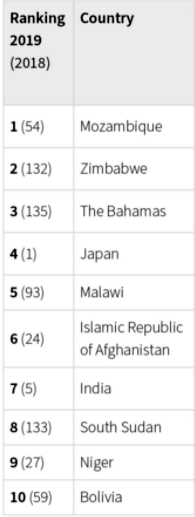
- This is the 16th Edition of the Index. It is published annually.
- Germanwatch, based in Bonn and Berlin (Germany), is an independent development and environmental organisation which works for sustainable global development.
Key Points
- About the Index
- The Index analyses the extent to which countries and regions have been affected by the impacts of weather-related loss events (storms, floods, heat waves etc.).
- The impact is calculated in terms of fatalities and economic losses, both.
- The most recent data available for 2019 and from 2000 to 2019 were taken into account.
- The 2021 Index does not include data from United States of America.
- The Climate Risk Index clearly signals that repercussions of escalating climate change can no longer be ignored, on any continent or in any region.
- Impacts from extreme-weather events hit the poorest countries hardest as these are particularly vulnerable to the damaging effects of a hazard, have a lower coping capacity and may need more time to rebuild and recover.
- High-income countries are also getting severely impacted by climate change.
- About 2021 Findings
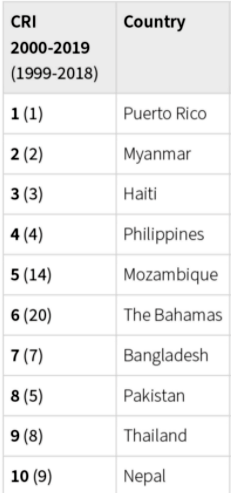
- Mozambique, Zimbabwe as well as the Bahamas were the most affected countries in 2019.
- For the period from 2000 to 2019, Puerto Rico, Myanmar and Haiti rank highest.
- Storms and their direct implications- precipitation, floods and landslides, were one major cause of losses and damages in 2019.
- Of the ten most affected countries in 2019, six were hit by tropical cyclones. Recent science suggests that the number of severe tropical cyclones will increase with every tenth of a degree in global average temperature rise.
- Eight out of the ten countries most affected by the quantified impacts of extreme weather events in 2019 belong to the low- to lower-middle income category. Half of them are Least Developed Countries.
- India’s Position:
- India has improved its rankings from last year. It is ranked 7th in the 2021 Index as compared to 5th in 2020 Index.
- The Indian monsoon lasted a month longer than usual in the year 2019, with surplus rains causing major hardship.The rain was 110% of normal, which is the most since 1994.
- The floods caused by heavy rains were responsible for 1800 deaths and led to displacement of 1.8 million people.
- Overall, 11.8 million people were affected by the intense monsoon season and the economic damage caused was estimated to be US$ 10 billion.
- India was hit by a total of 8 tropical cyclones. Of which, Cyclone Fani (May, 2019) caused the maximum damage.
- The Himalayan glaciers, the coastlines, and the deserts in India have been severely affected by global warming.
- The Report also points to an increase in the number of heat waves, increased intensity and frequency of cyclones and an increased rate of melting of glaciers in India.
- Suggestions:
- The global Covid-19 pandemic has reiterated the fact that both risks and vulnerability are systemic and interconnected. It is therefore important to strengthen the resilience of the most vulnerable against different types of risk (climatic, geophysical, economic or health-related).
- After the international climate policy process stalled in 2020 due to the Covid-19 pandemic, expectations regarding progress on the long-term finance goal and adequate support for adaptation lie in 2021 and 2022.
- The process needs to deliver:
- a decision on how the need for support for vulnerable countries concerning future loss and damage is to be determined on an ongoing basis.
- the necessary steps to generate and make available financial resources to meet these needs.
- strengthening the implementation of measures for adapting to climate change.
- Effective climate change mitigation and adaptation to prevent or minimize potential damage.
Governance
Draft Regional Plan 2041: NCR
Why in News
The National Capital Region Planning Board (NCRPB) has recently approved the 'Draft Regional Plan 2041' according to which the National Capital Region (NCR) is likely to reduce in size.
- NCRPB was set up in 1985, to promote balanced development of the NCR and to avoid haphazard development.
Key Points
- About
- New Boundary
- The geographical size of the region will be a contiguous circular region of 100km radius from Rajghat (Delhi). The area in the 100km radius can be developed as a core area.
- NCR is a region envisaged in 1985 for coordinated urban development in and around Delhi.
- Beyond 100 km radius and up to the existing NCR boundary, all notified cities/towns along with a corridor of one km on either side of connecting expressways/national highways/state highways/Regional Rapid Transit System will be included.
- Currently, the NCR consists of 24 districts in Uttar Pradesh, Haryana and Rajasthan and entire Delhi, spread across an area of 55,083 square kilometres.
- The geographical size of the region will be a contiguous circular region of 100km radius from Rajghat (Delhi). The area in the 100km radius can be developed as a core area.
- Name of Natural Conservation Zones
- The name of natural conservation zones, as introduced in the Regional Plan-2021 will be changed to “natural zones” in the upcoming Regional Plan-2041.
- Empowering States
- States will be empowered to decide whether tehsils that fall partly inside the NCR boundary should remain in it or not.
- Slum-free NCR
- The DRP 2041 Plan will pave the way for a future-ready, slum-free National Capital Region with an air ambulance facility and high-speed connectivity through helitaxis, road, rail, and inland waterways.
- Improved Rail Connectivity
- The Plan proposes to explore the feasibility of a 30-minute Mass Transit Rail System (MTRS) from the nearest NCR boundaries to Delhi.
- New Boundary
- Implications of the Move
- If implemented, parts of Panipat in Haryana and Muzaffarnagar in Uttar Pradesh will be dropped from the new NCR map.
- The idea is to have a compact area so that the development can be planned in a better manner.
- It will benefit the rural areas, as the state governments can plan for their development in a better manner.
- Issues Involved
- The NCR currently spans around 150-175 kilometres, covering entire districts and their rural areas. But with the approval of Regional Plan 2041, areas beyond 100 km are not likely to be the main part of the NCR.
- Lack of access to basic services of water and sanitation and other facilities in the region.
- Other issues included legality of some of the properties, narrow access roads, congestion, conflicts between commercial and residential uses, quality of drinking water and water logging.
- Vulnerability and risks related to disasters such as fire, earthquakes, etc.
- Lack of coordination between multiplicity of agencies like DDA, Delhi Jal Board, Flood and Irrigation Department, and various municipal corporations.
Way Forward
- The challenge of multiplicity of agencies needs to be dealt with by the government. This will increase coordination and cooperation among these agencies.
- There must be a strict adherence to plans for cleaning of water bodies and drains which has been a challenge for agencies in Delhi for years. Dumping of waste in the Yamuna river also needs to be strictly regulated.
Important Facts For Prelims
'Maharatna' Status to Power Finance Corporation
Why in News
Recently, the government has accorded the 'Maharatna' status to state-owned Power Finance Corporation (PFC).
- An order to this effect was issued by the Department of Public Enterprises, under the Ministry of Finance.
- PFC has become the 11th public sector enterprise to get the ‘Maharatna’ status in the country and joins the ranks of other such companies like ONGC, Indian Oil Corporation, Steel Authority of India Limited (SAIL) and BHEL among others.
Key Points
- Maharatna” Status
- The Maharatna dispensation was ushered in by the Union government for mega Central Public Sector Enterprises (CPSEs) to become global giants (introduced in 2010).
- CPSEs are those companies in which the direct holding of the Central Government or other CPSEs is 51% or more.
- “Maharatna” status is granted to a company which has recorded more than Rs. 5,000 crore of net profit for three consecutive years, an average annual turnover of Rs. 25,000 crore for three years or should have an average annual net worth of Rs. 15,000 crore for three years. It should also have global operations or footprints.
- A CPSE should also have a Navratna status, be listed on an Indian stock exchange.
- The Government has laid down criteria for grant of Maharatna, Navratna and Miniratna status to CPSEs.
- The Maharatna dispensation was ushered in by the Union government for mega Central Public Sector Enterprises (CPSEs) to become global giants (introduced in 2010).
- Power Finance Corporation (PFC)
- Incorporated in 1986, PFC is the largest infrastructure finance company dedicated to the power sector under the administrative control of the Ministry of Power.
- Significance of the Recognition
- Greater Financial and Operational Efficiency:
- PFC can invest up to Rs. 5,000 crore, or 15% of its net worth, in a single project apart from being granted enhanced powers by the government for undertaking mergers and acquisitions.
- Navratna and Miniratna CPSEs can invest up to Rs. 1,000 crore and Rs. 500 crore, respectively.
- The PFC Board can also structure and implement schemes relating to personnel and human resource management and training.
- PFC can invest up to Rs. 5,000 crore, or 15% of its net worth, in a single project apart from being granted enhanced powers by the government for undertaking mergers and acquisitions.
- Offer Competitive Financing
- Enable PFC to offer competitive financing for the power sector, which will go a long way in making available affordable & reliable ‘Power For All 24x7’.
- Push Government Agenda
- The enhanced powers that come with Maharatna Status will also help PFC in pushing the government’s agenda of funding under the National Infrastructure Pipeline, national commitment of 40% green energy by 2030 and effective monitoring and implementation of the new revamped distribution sector scheme with an outlay of more than Rs. 3-lakh crore.
- Greater Financial and Operational Efficiency:
Important Facts For Prelims
Flower Scorpionfish
Why in News
Recently, a fish species named Flower Scorpionfish (Hoplosebastes Armatus) which was only found in the Pacific Ocean has been discovered in the Indian Ocean.
- The rise in the temperature of sea water due to global warming might have induced the migration of this species from different regions.
Key Points 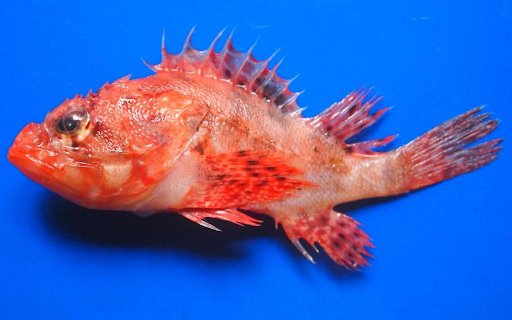
- About
- It belongs to the order of ray-finned fish that are also known as Scorpaeniforme.
- It was discovered in the Pacific Ocean off Japan almost a century ago in 1929.
- Fish of the scorpionfish family are some of the most poisonous animals in the ocean
- The head of the species is comparatively large and greater than the body.
- The length of the species ranged from 75-127 mm, while its body width was from 14-22 mm.
- Scorpionfish blend in perfectly with their coral and rocky surroundings because of their mottled color patterns.
- It belongs to the order of ray-finned fish that are also known as Scorpaeniforme.
- Habitat
- Earlier, they were only found in the Pacific Ocean. However, its range now extends from the Northwest Pacific to the Indian Ocean
- Scorpaeniformes
- Also called mail-cheeked fish, any one of a group of bony fishes that are characterized by a plate of bone running across each cheek.
- They are widespread throughout the oceans of the world.
- They are believed to have originated in warm marine waters but have invaded temperate and even Arctic and Antarctic seas, as well as fresh waters of the Northern Hemisphere.

